- 1. How does ShineTec ensure the quality of vibratory polishing machines?
- ShineTec's vibratory polishing machine, referred to as vibratory polisher or vibrating polishing tumbler, adopts the classic three-dimensional spiral vibration principle. After decades of actual production, it has been fully verified in industries such as machining, electronics, molds, die-casting, and 3D printing.
Professional CAD design software, laser plasma cutting and other advanced processes are used to ensure the accuracy of parts.
Raw materials are purchased from well-known domestic and foreign manufacturers. During the welding, PU pouring, painting and other processes, the products are controlled by skilled workers with many years of front-line production experience, adhering to the spirit of craftsmanship to ensure product quality.

- 2. How to choose the right vibratory polishing machine?
- In response to your workpiece polishing needs, we will ask you to send samples for process testing in the early stage. If you are satisfied with the final results of our samples, we will then based on the actual conditions of your products, such as material, shape, size, and processing quantity. and other factors, provide a professional process solution, select vibratory polishing machines with different processing capacities, or corresponding auxiliary equipment that can help improve efficiency, complete supporting functions, and polishing media that suit the requirements.
- 3.How do you determine the processing capacity of the vibratory polishing machine you need?
- Based on the sample results of your workpiece, the process selection for polishing treatment is determined. Next, you need to provide the daily processing quantity requirements of your workpieces. The workpiece and polishing media cannot fill the entire machine. Generally speaking, the total volume of polishing media and workpiece cannot exceed 80% of the machine capacity. The following is a reference table for the volume ratio of media to workpieces corresponding to different polishing process requirements during feeding:
Media to workpiece volume ratio Typical application 0 : 1 No tumbling media, self-finishing and polishing, such as some decorative stones for handicrafts. 1 : 1 The same proportion of abrasive media and parts such as forgings, castings, etc., with very rough surfaces. 2 : 1 Gentle finishing, allowing workpieces to collide with each other. 3 : 1 Minimum ratio for finishing copper, aluminum, zinc and other non-ferrous metal workpieces. The workpieces may collide with each other, so the ratio is suitable for grinding and polishing ferrous metals. 4 : 1 The ratio of non-ferrous metal workpieces with average efficiency. High polishing efficiency ratio for ferrous metal parts. 5 : 1 More suitable for finishing non-ferrous metal parts. Workpieces rarely collide with each other. 6 : 1 Suitable for finishing of non-ferrous metal products. Commonly used for pre-plating treatment with resin media and aluminum and zinc alloy workpieces. 8 : 1 Suitable for finishing of non-ferrous metals or precision parts. Less surface roughness and smoothness. 10:1~20:1 Better finishing quality. Suitable for irregular shapes or fragile workpieces. Maximizing No collision between workpieces. One machine polishes one part or each workpiece needs to be separated. - 4. What is the quality guarantee for the parts and raw materials of the vibratory polishing machines from ShineTec?
- We purchase reliable spare parts from big brands to produce our vibrating polishing machines. The following are the purchasing channels for spare parts: The vibration motors come from large professional manufacturers in Wuxi or Shanghai. The PU lining rubber comes from Dow Chemical of the United States. Electrical control parts come from regular manufacturers such as Delixi or Chint. The brown corundum sand powder used in the production of ceramic media is also a new top-level raw material and is not a secondary recycled material used by many small manufacturers in the industry. Micropowder and clay are also sourced from top domestic manufacturers. Therefore, the main parts and raw materials required for production are traceable, and quality can be guaranteed.
- 5.What does the guide angle of the eccentric weight on the motor mean?
- The angle formed by the eccentric weights (commonly known as hammers) at the upper and lower ends of the motor is called the guide angle. The factory default angle is 90 degrees at right angles to each other. This angle causes the polishing media and workpiece to tumble from the outside to the inside of the vibrating polishing machine and rotate clockwise. If you need to adjust the vibration and rotation directions, the two included angles can be adjusted to 70 degrees or 120 degrees.
The adjustment of eccentric weight of the vibration motor has two functions:
⑴ Adjustment of the excitation force: Remove the tightening bolts of the eccentric weight and adjust the excitation force by increasing or decreasing the number of eccentric weights;
⑵ Adjustment of the angle between the upper and lower eccentric weights: the upper eccentric weight is a fixed block and the lower eccentric weight is an adjustable block, both of which are pressed on the motor shaft using fastening bolts. There are reference lines engraved on both ends of the rotating shaft. The outer surface of the lower weight is equipped with a scale indicating the rotation angle. Loosen the pressing bolt of the lower eccentric weight and rotate the lower eccentric weight so that the angle scale mark on the lower eccentric weight is aligned with the reference mark of the rotating shaft line, adjust to the required angle, and tighten the lower eccentric weight holding bolt; if you need to adjust the angle of the upper eccentric block, you can also adjust it according to the corresponding method.
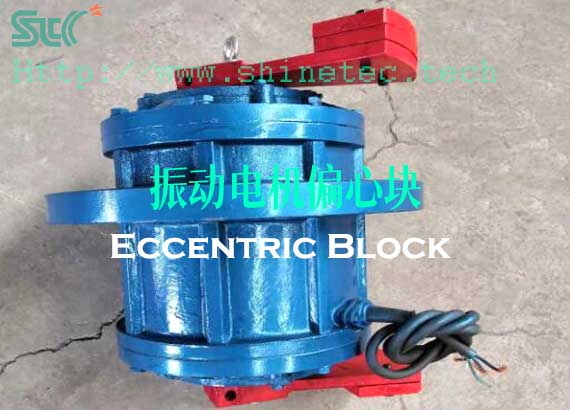
- 6.What is the after-sales service for ShineTec’s vibratory polishing machines?
- The whole machine has a one-year warranty. All parts will be replaced free of charge during the warranty period. Lifetime free technical support. After the warranty expires, accessories will be charged at cost. If necessary, we will also send a video demonstrating the machine parts replacement process.
- 7. What is the daily maintenance of vibratory polishing machines?
- Routine daily maintenance is the inspection of the PU lining and vibration spring of the machine.
If it is found to be damaged or broken, the parts should be replaced immediately.
If the machine runs for more than 8 hours, you should add lubricating oil to the vibration motor every month.
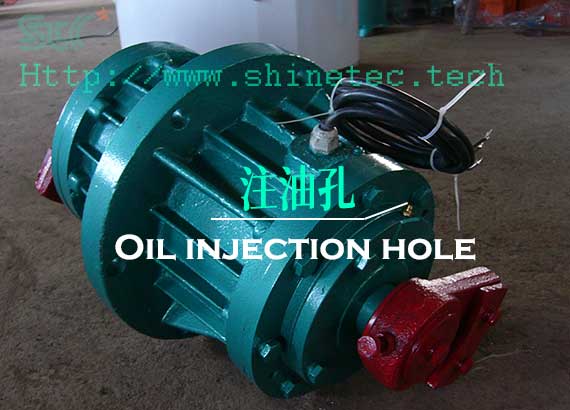
- 8. What is the installation process of a vibratory polishing machine?
- The first step is to install the electrical control box. Connect the power cord and make a good connection to the ground wire. The yellow or green wire is ground.
Next, remove the iron piece holding the spring on the base. Otherwise, the machine will jump on the ground after starting.
Finally, place the machine on a flat ground and connect the tap water faucet and sewage facilities.
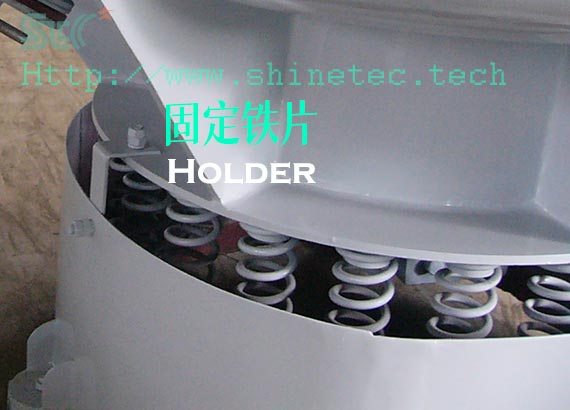
- 9.What problems can occur when using a vibratory polishing machine?
- 9.1 The tumbling direction is wrong. The normal rolling direction of polishing media and workpiece is from the outside of the working bowl to the center. If the direction is opposite, please observe whether the angle between the upper and lower eccentric weights of the motor is 90 degrees. If the angle is correct, the problem may lie in the order in which the three-phase power lines are connected. Please exchange the positions of the U and V lines.
9.2 The rotation direction is wrong. The normal rotation direction of the polishing media and workpiece in bowl is clockwise. If it is not correct, please try to adjust the angle of the upper and lower eccentric weights of the motor to 75 degrees. You can also reduce the weight of the eccentric block at the bottom of the motor or increase the weight of the eccentric block at the top of the motor. - 10. What kind of power supply does ShineTec's vibratory polishing machine require?
- Our machine requires 3-phase, 380V, 50Hz. If your machine will be used abroad, please inform us of the country of use or power requirements when ordering. We can customize machines to the electrical requirements of the country of use. It is recommended to use 3-phase power supply, which is more efficient than single-phase. It is also safer in high current environments.
- 11.What can a vibratory polishing machine do?
- If your product requires deburring, deflashing, chamfering, derusting, descaling, edge rounding, derusting, brightening, burnishing, etc., then our vibratory polishing machine can help you solve such problems. The machine can be used to process machined parts of different shapes, materials, sizes, and surface strengths. It is a very common tumbling polishing machine on the market (also called tumbling polisher). After surface treatment, it can increase the competitiveness of your products, save processing time and costs, and can process large quantities of workpiece products in a short time.
- 12. What are the spare parts and auxiliary materials that make up a vibratory polishing machine?
- The most important components are as follows:
12.1 The working bowl of the machine. The shape is arc-shaped or U-shaped bowl-shaped body. The polishing media, workpieces to be processed, water and polishing liquid are placed in the bowl. The inside is lined with wear-resistant PU colloid, which can protect the workpiece from directly hitting the inner wall of the bowl and the polishing media from cutting the inner wall iron plate.
12.2 Separating screen. The separating screen is mainly used to separate the workpiece from the abrasive media after polishing. Built into the working bowl of machines over 100L, it is also cast from wear-resistant PU glue, with round or square holes. The diameter is generally above 20MM. If the hole size needs to be very small, we can also customize a screen plate made of stainless steel plates for you. The screen plate can be changed at will to adapt to different workpieces and polishing media.
12.3 Vibration motor. This is the main component of the vibratory polishing machine. The machine operates by the excitation force it generates. It is also a key factor that determines the working efficiency and operating life of the machine.
12.4 Suspension spring. The working bowl is supported by springs and vibrates up and down. The hardness and length of the spring also affect the vibration amplitude of the machine.
12.5 Water recovery device. This is an optional device. Water and polishing fluid can be recycled, reducing sewage discharge and meeting environmental protection requirements.
12.6 Frequency converter. The vibration amplitude and operating speed of the machine can be controlled through the frequency converter. Some workpieces are easily deformed or fragile, and the vibration amplitude of the machine needs to be reduced or the running speed of workpieces made of different materials needs to be adjusted, which can be adjusted through it.
12.7 Acoustic lid. The acoustic lid can reduce the noise produced by the machine when it is running. Generally it can be reduced by about 20 dB.
12.8 Control box. The vibrating polishing machine can be equipped with an external electrical control box. It can be mechanical button type or digital display touch screen type.
12.9 Polishing media. There are many types of abrasive media. There are tumbling polishing media made of brown corundum, porcelain, and resin, as well as stainless steel and abrasive chip from wood and bamboo chips. Each material has different shapes and sizes to adapt to various irregular shaped workpieces.
12.10 Polishing liquid. The compound liquid added to the abrasive and workpiece play a supporting role in the finishing and polishing process. Generally, finishing liquid improves the cutting efficiency of the workpiece, polishing liquid can improve the brightness of the workpiece surface during fine finishing, and anti-rust liquid is used to protect the surface of metal workpieces from corrosion and rust after being cleaned with water. It comes in liquid, powder, and paste forms. It can also be used without adding water for dry finishing.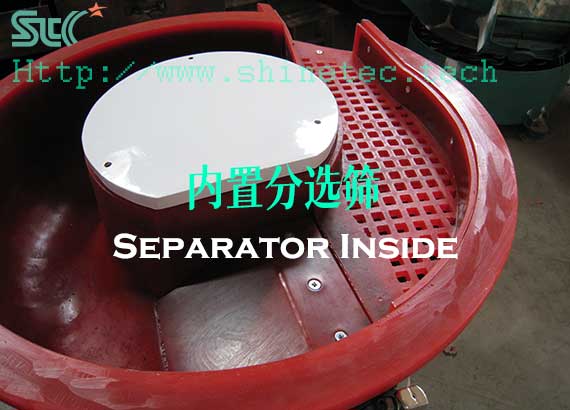
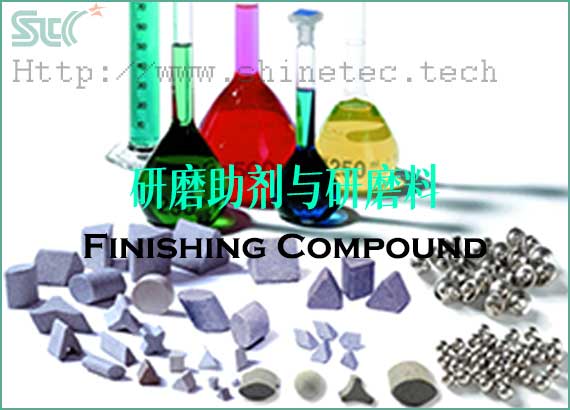
- 13. How does a vibratory polishing machine work?
- Put the workpiece and polishing media to be processed into the working bowl of the machine according to the corresponding ratio, and then add an appropriate amount of water. The water surface should not be covered with the abrasive, as long as the water can be seen at the bottom of the bowl. Then add a small amount of polishing liquid and start the machine. The amplitude and running speed of the machine can be adjusted through the control box.
- 14. What is the difference between a vibratory polishing machine and other tumbling polishing machines?
- The main difference is the way the machine works. vibrating polishing machine uses a vibration motor to drive the working bowl of the machine to use a three-dimensional spiral vibration motion to cause the workpiece and abrasive media to tumble and rotate in the machine, allowing the abrasive media to cut on the surface of the workpiece to achieve deburring, descaling, chamfering and other effects. Because it is open type, the polishing effect on the workpiece surface can be observed at any time during the operation of the machine, and it is suitable for large-scale finishing and polishing.
- 15.What are the reasons for choosing a vibratory polishing machine compared to other polishing machines?
- Ease of operation and low cost are the two top reasons to purchase a vibrating polisher. At the same time, the daily maintenance of the machine is also very simple and convenient.
- 16. What types of vibratory polishing machines are there?
- ShineTec produces the following types of vibrating polishing machines:
16.1 Arc-shaped Vibratory Polishing Machine. The outer wall of the working bowl of this type of machine is an arc-shaped curve, and the bottom has two structures: flat bottom and spiral. Lined with polyurethane PU glue.
16.2 U-shaped Vibratory Polishing Machine. The outer wall of the working bowl of this type of machine is U-shaped, and the rest is the same as the arc-shaped machine above.
16.3 Tub Polishing Machine. The working container of this type of machine is a rectangular tub-shaped body. This type of machine is designed to finish and polish some workpieces that are too long, such as more than 500mm in length. There are two installation positions for vibration motors. One is to install a vibration motor at both ends of the machine; the other is to install a motor at the bottom of the machine. Generally, if the working tub of the machine exceeds 2 meters, the motor will be installed at both ends. The amplitude and speed of the machine can also be achieved through frequency converters. - 17. What polishing media are needed for vibratory polishing machines?
- Depending on the shape, material, specifications and sizes of your parts, you need to choose different types of polishing media. Abrasive media that can be used in the machine are: Ceramic Deburring Media, Porcelain Polishing Media, High Density Porcelain Media, Plastic Media, Stainless Steel Media and organicBio-degradable Polishing Media. Improper selection of abrasives during the polishing process will affect finishing efficiency and may even cause damage to the workpiece.
- 18. What factors should you consider when purchasing a vibratory polishing machine?
- First, samples testing need to be conducted to determine whether vibratory polishing is suitable for your workpiece. Next is some requirement data that needs to be clarified: Rough finishing to remove burrs, scale, flash or fine finishing to polish the brightness? Allowable dimensional tolerance after finishing and polishing. Burr length. Time required for completion. Polishing media shape and size. Whether the abrasive media will clog the holes or gaps in the parts. Are workpieces allowed to collide with each other? How to clean the workpiece after finishing? How to clean abrasives media? Are there any rust prevention requirements for workpieces? Average daily processing capacity requirements.
- 19. How much does a vibratory polishing machine cost?
- The price depends on the process requirements. Machines have different processing capabilities and polishing tumbling media have different applicable functions, which will cause price changes. Only after the processing solution is determined can a clear quotation be given.
- 20. Are there any dangers in operating a vibratory polishing machine?
- There is no danger if the operating instructions are followed.
- 21. What are the different functions of a vibratory polishing machine?
- Vibrating polishing machines can achieve the following functions:
21.1 Deburring, deflashing, chamfering. Defects caused during workpiece processing that may cause harm to users can be automatically removed in large quantities.
21.2 Derusting and descaling. Surface problems such as turning lines and mold lines can also be removed.
21.3 Improve surface finish and brightness. Make the product surface smoother and brighter.
21.4 Cleaning and degreasing. It can automatically remove dust, dirt, sludge and other phenomena adsorbed on the surface of the workpiece. - 22. What industries can vibratory polishing machines be used in?
- Can be used in the following industries:
22.1 Automobile parts. Gears, pistons, hubs and other parts that require machine polishing.
22.2 Aerospace industry. Strength and durability are the main evaluation indicators of the workpieces required in this industry. Vibratory polishing machines can increase the surface strength of the product and obtain a mirror-like finishing effect.
22.3 Medical devices and equipment. The materials used in medical devices include stainless steel, titanium alloy, cobalt-chromium alloy or other special materials. Vibratory polishing machines can process these products and improve the surface quality to obtain a beautiful surface effect.
22.4 In addition, in mechanical parts, plastic products, 3C digital, metal casting, electronic devices, hardware parts, kitchen supplies, 3D printing It is widely used in industries such as textile workpieces, powder metallurgy, electrical components, minting, jewelry, instrumentation, and handicraft accessories.
About Vibratory Polishing Machine
- 1. How does ShineTec ensure the quality of vibratory polishing machines?
- 2. How to choose the right vibratory polishing machine?
- 3.How do you determine the processing capacity of the vibratory polishing machine you need?
- 4. What is the quality guarantee for the parts and raw materials of the vibratory polishing machines from ShineTec?
- 5.What does the guide angle of the eccentric weight on the motor mean?
- 6.What is the after-sales service for ShineTec’s vibratory polishing machines?
- 7. What is the daily maintenance of vibratory polishing machines?
- 8. What is the installation process of a vibratory polishing machine?
- 9.What problems can occur when using a vibratory polishing machine?
- 10. What kind of power supply does ShineTec's vibratory polishing machine require?
- 11.What can a vibratory polishing machine do?
- 12. What are the spare parts and auxiliary materials that make up a vibratory polishing machine?
- 13. How does a vibratory polishing machine work?
- 14. What is the difference between a vibratory polishing machine and other tumbling polishing machines?
- 15.What are the reasons for choosing a vibratory polishing machine compared to other polishing machines?
- 16. What types of vibratory polishing machines are there?
- 17. What polishing media are needed for vibratory polishing machines?
- 18. What factors should you consider when purchasing a vibratory polishing machine?
- 19. How much does a vibratory polishing machine cost?
- 20. Are there any dangers in operating a vibratory polishing machine?
- 21. What are the different functions of a vibratory polishing machine?
- 22. What industries can vibratory polishing machines be used in?